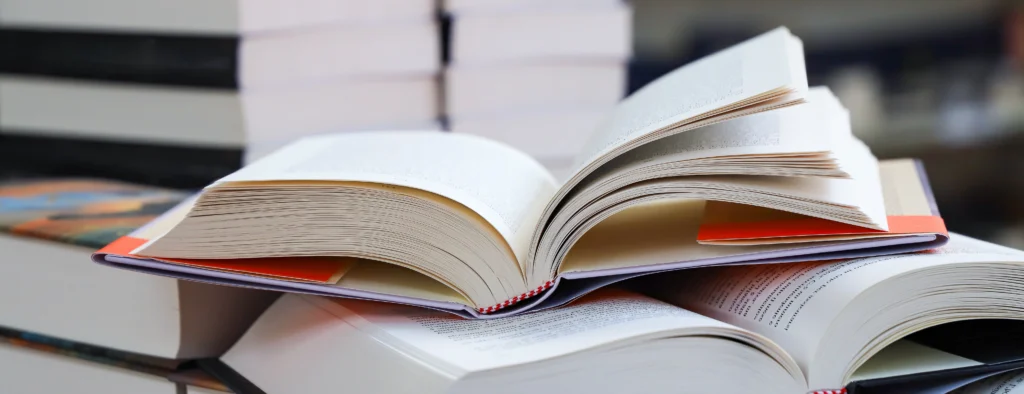¿? Faqs
Frequently Asked Questions

TUBES AND BARS
SERVICES
“S” : structural steel.
“355”: Minimum value of the apparent yield strength (N/mm²)
“J2”: Breaking energy characteristics 27 Joules min. at -20º C.
“H”: Hollow section.
Table of possible breaking energy conditions:
“J0” Breaking energy: 27 Joules at 0º C.
“JR” Breakdown energy: 27 Joules at room temperature.
“N” Breaking energy: 40 Joules at -20ºC.
“NL”: Breaking energy: 27 Joules at -50º C.
EN10204.3.1.: Factory original.
EN10204.3.2.: Supported by independent certification company. (LRQA-UKAS, Lloyd’ s, DNV etc…)
EN10204.2.2.
Protubsa supplies standard EN10204.3.1 certificates.
EN10204.3.2 certificates can be supplied upon request at the time of order.
EN10219 (EN10219-1:2006) Cold-formed welded hollow structural sections of non-alloy and fine grain steel (also welded and seamless)
EN10210 (EN10210-1:2006) Hot finished hollow structural sections of non-alloy and fine grain steel. (welded, seamless and also seamless welded)
EN10025 (EN10025-3:2004) Hot rolled structural steel products.
EN10225 (EN10225:2009) Weldable structural steels for fixed marine structures.
EN10113 (EN10113-2:1993) Hot rolled products for metallic constructions. Welded fine grain steels.
Eurocode 3 (Eurocode 3 or EN 1993) is the European standard for the design of steel structures. It includes criteria for design, safety and verification of joints, including welds, for both open section elements (I, H, U sections, etc.) and tubular elements (circular, square, rectangular).
For tubular elements (circular, square and rectangular sections), it is partly based on the recommendations of CIDECT (international association for steel construction with hollow tubes).
For pipes manufactured according to EN10210: No additional reductions apply.
For pipes manufactured according to EN10219: In some cases, the calculation must consider different properties between corners and walls → more conservative if no advanced rules are used (contact Protubsa staff for further restrictions).
Yes, of course, but the results obtained will depend in part on the quality of the steel and its chemical composition. Indeed, when steel is immersed in liquid zinc, a diffusion reaction takes place between the zinc and the steel. It is necessary to impose specifications for the respect of these two elements. The standard NF A35-003 “Steels for hot dip galvanizing” defines three classes of steel according to the guaranteed silicon and phosphorus content in the product.
Class 1: Si% < 0.030 Si% + 2.5P% <0.090
Class 2: Si% < 0.040 Si% + 2.5P% < 0.110
Class 3: 0.15 ≤ Si% ≤ 0.030 Si% + 2.5P% < 0.325 P ≤ 0.040
For class 1 and to a lesser extent class 2 steels, they guarantee a coating with a uniform appearance and a thickness corresponding to the minimum values guaranteed in the NF ISO 1461 standard. For class 3 steels, the coating thickness is, under identical galvanizing conditions, in the order of 120 µm to 200 µm, although in some cases these limits can be exceeded. The appearance is generally duller than in the other classes 1 and 2. Gray or rough areas may appear, but this has no effect on the anti-corrosion properties. Their effective life is therefore longer.
For further information, please contact our sales staff.
Carbon equivalent (CE or CEV) is a metallurgical parameter used to estimate how the chemical composition of a steel influences its weldability.
Formulas used:
Ceq -AWS: = C + [(Mn+Si)/6 + (Cr+Mo+V)/5 + (Ni+CU)/15] long formula includes Si.
Ceq -O ‘ Neill: = C + [(Mn)/6 + (Cr+Mo+V)/5 + (Ni+CU)/15] long formula
Ceq -short f.: = C + [(Mn)/4] long formula includes Si.
One of the differences is that in EN10297 the dimensional range of external diameters is in inches (e.g. Ø 219.1) and in EN10294 it is defined in metric (e.g. Ø 200).
Another important issue is that in EN10297 the dimension is defined by Ø Ext. x thickness and in EN10294 it is defined by Ø Ext. x Ø Int.
Last but not least, under EN10297 all manufacturers are governed by the same dimensional range of external diameters and thicknesses and under EN10294 there is a difference between the two standards, i.e. each manufacturer has different thicknesses and diameters.
The formula for the approximate calculation of the weight of one meter of carbon steel pipe is as follows:
Weight Kg/Meter = [(Ø Ext. – Thickness)* Thickness) * 0.0246615], where 0.0246615 is a constant.
1. Neutral Salt Spray Test (NSS or Neutral Salt Spray Test)
Standard: ISO 9227 – ASTM B117
It consists of exposing the bars to an environment with sodium chloride mist (5% solution) at 35 °C.
The time until the appearance of:
White corrosion (rust of the coating, in this case chrome).
Red corrosion (base steel rust, actual failure of protection).
This is the most common test for chrome bars.
Example of a typical requirement:
≥ 96 h without red corrosion → standard quality.
≥ 200-400 h → improved quality.
≥ 600-1000 h → high performance coatings.
2. Acetic acid salt spray test (AASS)
Variant of the previous one with acetic acid (lower pH).
Standard: also ISO 9227.
More severe than the NSS.
It is used in chrome coatings when simulation of more aggressive environments (e.g. industrial or marine humidity) is required.
3. CASS (Copper-Accelerated Acetic Acid Salt Spray) Salt Spray Test
Standard: ISO 9227, CASS test.
Cupric chloride → much more aggressive is added.
Applied in multilayer coatings (e.g. nickel+chrome).
It is not the most common for pure chrome bars, but it is the most common for decorative or multilayer bars.
4. Cyclic Corrosion Tests (CCT – Cyclic Corrosion Tests)
Standards: ISO 16701, SAE J2334, among others.
They combine salt spray, humidity, condensation and drying cycles.
More realistic than the continuous salt fog test.
Increasingly used in automotive and severe applications.
5. Alternating Salt Fog Test (Prohesion Test)
Standard: ASTM G85.
Alternating cycles of salt spray and drying.
Allows detection of adhesion failures or microcracks in thin chrome layers.
Other complementary tests
Coating thickness measurement (ISO 2178 / ISO 3497).
Coating adhesion (ASTM B571).
Microscopy / metallographic cutting to verify porosity and microcracks.
✅ In summary:
The most common test for chrome-plated bars is the neutral salt spray test (ISO 9227 / ASTM B117), supplemented in critical applications with more aggressive tests such as AASS or CASS, or with cyclic tests that better simulate the real environment.
PROTUBSA’s standard for its stock is 200 hours rating 9 according to neutral salt spray test, although on demand we can adapt to other resistances with minimum quantities.
Yes, all chrome-plated bars and tubes are protected from possible occasional damage due to handling, with protection by extruded polyethylene film, cardboard, wood or other suitable covers. Thus PROTUBSA guarantees the protection of the chrome layer and keeps it intact during handling and storage operations.
+A Soft annealed
+AC Annealed to achieve spheroidization of the carbides
+AR As rolled
+AT Solution annealed
+C Cold drawn / hard
+CR Cold rolled
+FP Treated to ferrite-perlite structure and hardness range. (Treated to ferrite-pearlite structure and hardness range)
+I Isothermal annealing
+LC Cold drawn soft
+M Thermomechanical rolling
+N Normalized
+NT Normalized and tempered
+P Precipitation hardened Precipitation hardened
+PE Peeled
+QA Air quenched and tempered
+QL Liquid quenched and tempered
+QT Quenched and tempered
+S Treated to improve shearability. (Treated to improve sheareability)
+SH As rolled and turned
+SR Cold drawn and stress relieved
+T Tempered
+WWW Warm worked
+U Untreated
General rule (ISO tolerances)
Capital letter (F, H, K, N, etc.) → for outside diameters (shafts).
Lower case (f, h, k, n, etc.) → for inside diameters (holes).
This comes from the ISO standard for fits and tolerances:
D (Exterior, axis) → is associated with capital letters.
d (Interior, hole) → is associated with lowercase letters.
These are the different classification numbers and their description:
EN 10305-1
Steel tubes for precision applications. Cold drawn seamless tubes. Example: Calibrated tubes, tubes prepared for lapping, H8 lapped tubes.
EN 10305-2
Steel tubes for precision applications. Cold drawn welded tubes. Example: H9 bright drawn tubes.
EN 10305-3
Steel tubes for precision applications. Cold drawn welded tubes. Example: Calibrated tubes.
EN 10305-4
Steel tubes for precision applications. Cold drawn seamless tubes for hydraulic and pneumatic systems. Example: Tubes for NBK oil-dynamic circuits.
EN 10305-5
Steel tubes for precision applications. Welded and cold drawn square and rectangular tubes.
We are a company specialized in the distribution of carbon steel tubes and bars for structural, mechanical, hydraulic-pneumatic, oilgas, offshore and laser tube sectors. Our commitment is to provide quality products and reliable solutions to our customers.
Our fiscal headquarters are located in Legutiano (Álava), and we have three production centers: Legutiano. S.Jaume dels Domenys (Tarragona) and Meco (Madrid). We serve customers throughout the national territory.
You can write us at protubsa@protubsa.com , call us at +34 977 677 913 or send us a direct message by WhatsApp +34 686 51 22 42.
We accept bank transfers, and other options according to the client’s needs.
Yes, we have credit options for registered customers, subject to approval.
Yes, we deliver nationwide with our own trucks. We also have shipping options through indirect partners.
It depends on the location and availability of the product. On average, deliveries are made within 2 to 7 business days.
Yes, we currently provide the information at your request, although we expect to soon standardize the information automatically by digital means the day before it is delivered.
You only have to contact us when you receive the product and indicate it in our delivery note and our support team will contact you to solve it as soon as possible.
Yes, our team of consultants is available to help you choose the right product and answer any technical questions.
You can request technical data sheets and product manuals directly from our sales team.
Write to us directly through our contact form or by WhatsApp +34 686 51 22 42 or by phone at +34 945 46 56 00 – + 34 977 677 913 – +34 91 871 30 32


